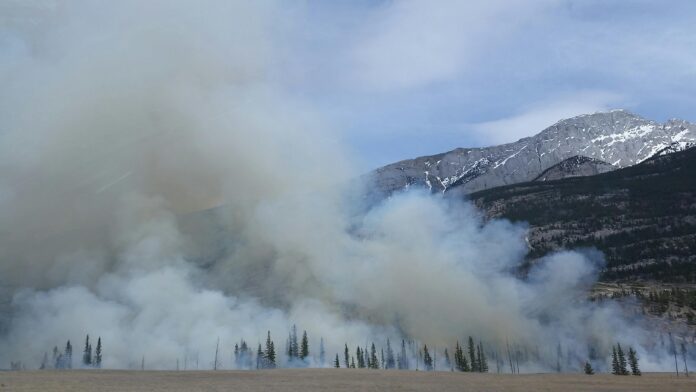A fire that refuses to die, even in the heart of winter? This isn’t science fiction; it’s the chilling reality of zombie fires plaguing parts of Canada. These smouldering infernos burn underground, fuelled by organic matter and insulated by snow, only to re-emerge with the arrival of spring — posing a significant threat to the upcoming wildfire season.
What are “zombie fires”?
Unlike the dramatic flames of traditional wildfires, zombie fires, also known as overwintering fires, burn slowly beneath the surface. They thrive in environments rich in organic material like peat moss, commonly found in Canada’s boreal forests. A blanket of snow acts as an insulator, trapping heat and allowing the fire to persist even during harsh winters.
While these fires have always existed, their frequency is on the rise.
“This continued smouldering through the winter, I think, is very alarming to see”, especially after Canada’s record-shattering wildfire season last year, said Jennifer Baltzer, a professor and fire expert at Wilfrid Laurier University, in an interview with BBC.
The concerns surrounding zombie fires are particularly acute in the wake of Canada’s devastating 2023 wildfire season. Over 18 million hectares of land burned, surpassing the country’s 10-year average and leaving lasting scars on communities and ecosystems.
The spike in overwintering fires in Western Canada is highly unusual.
“It’s not something I’ve seen in any of the data sets,” Baltzer said to CBC in another statement.
“What we don’t know is how many of these will actually translate to reignition in the spring.”
Many of these zombie fires are remnants of wildfires from last year that couldn’t be fully extinguished due to resource limitations.
Fuelling the flames
The story doesn’t end there. Beyond the lingering embers of 2023, two crucial factors are creating a tinderbox for future wildfires: drought and climate change.
Much of British Columbia has been grappling with extreme drought conditions for the past two years. This lack of moisture creates a perfect environment for fires to ignite and spread rapidly.
Climate change further exacerbates the situation. Zombie fires were once infrequent, but scientists say they have become more common in recent years due to a rapidly warming climate. Rising temperatures contribute to drier conditions, creating a vicious cycle that fuels wildfires.
While zombie fires are currently being monitored, they pose a significant threat if they reignite in the spring. The potential for an early snowmelt, coupled with ongoing drought, creates a scenario ripe for widespread wildfires. Additionally, the possibility of an El Nino year, characterized by hot and dry conditions, further intensifies concerns.
“It depends on the day-to-day weather that we’ll see in the spring,” said Mike Flannigan, a professor and fire management expert at Thompson Rivers University in Kamloops, BC.
“The dice are loaded, the deck is stacked — whatever phrase you want to use, there is a high likelihood of a very active spring,” he added.
Preparing for the future
Continued monitoring of zombie fires is crucial, alongside efforts to mitigate drought conditions and implement effective fire management strategies. Investing in resources and infrastructure to combat wildfires is also essential.
Ultimately, addressing climate change remains the key to breaking this cycle of fire and destruction. By transitioning to cleaner energy sources and implementing sustainable practices, we can create a future where these zombie fires become a relic of the past, not a harbinger of a burning future.








































